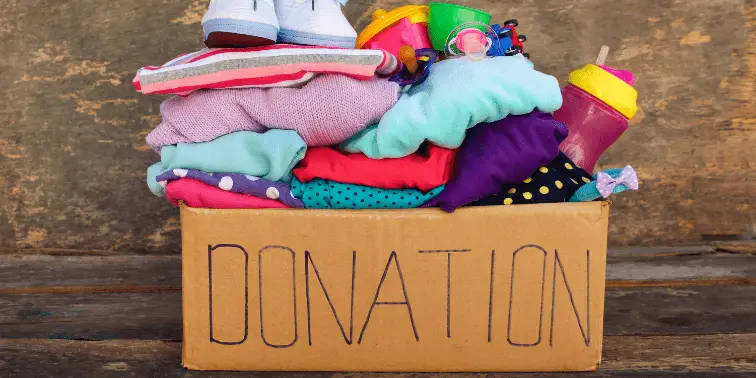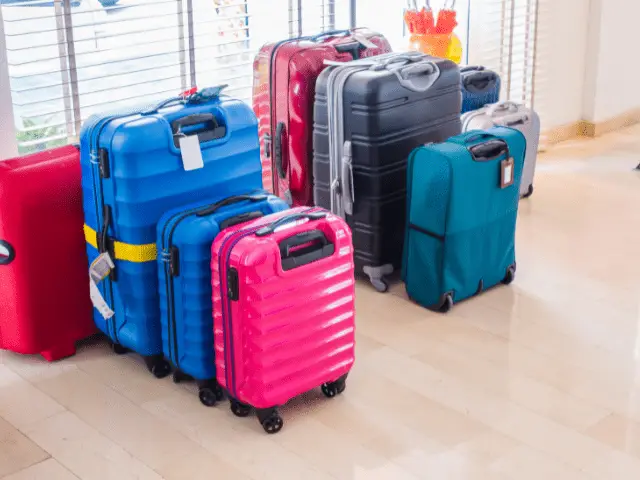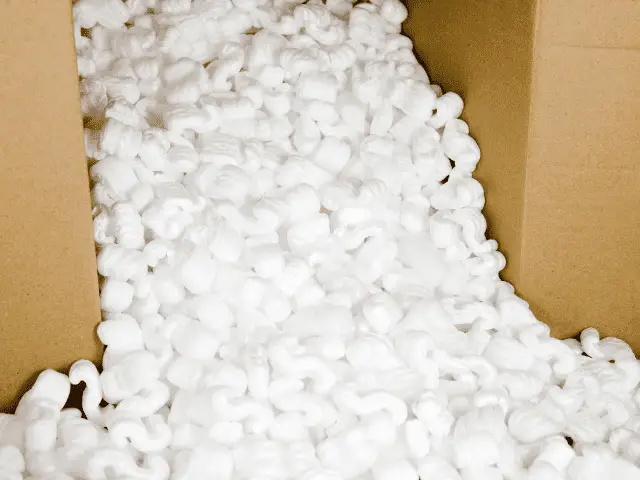Have you ever thought about how much packing material and other moving supplies you throw away after moving and unpacking? Have you noticed a dent in your wallet (or credit card account) after buying the recommended moving supplies?
And have you thought about all you planned on using to get your belongings from one place to another but didn’t?
Did you ever purchase moving supplies that you never used? Are they sitting in a closet or attic because they cost too much to throw away? Do you think you might have a use for them at some point?
While it isn’t hard to put old cardboard in a dumpster to recycle, what do you do with Styrofoam and other plastics that can be tossed but won’t degrade or go away during your lifetime?
As we begin 2022, our toxic and wasteful past is coming back to haunt us. We see it in dramatic climate shifts, recyclable items going to landfills, and virtually endless amounts of plastics in the planet’s oceans and other bodies of water.
Yet, many are stuck in the groove of telling ourselves, “We only use what we need” or “This is the government’s problem, not ours.”
We want to take our own small step toward reducing waste and preserving the natural environment through the ways we move and the materials we use for it. So we’ll introduce you to some eco-friendly moving techniques and strategies. It may not change much in the short term, but if everyone planning a move this year joins in, what a precedent that could set!
Table of Contents
Make Lists and Mark Your Calendar

Lists remind you of the small tasks and when to take them on, so you don’t delay your departure. They also can be important when you’re trying to pull off an eco-friendly move.
Did we mention that moving with the natural environment in mind can take longer than the standard way? But once you’ve tried it, there will be no going back!
We think lists are a terrific way to get organized for moving. Do them early and make them as precise as possible.
Lists help you plan over time, so you’re less likely to miss something along the way. Doing this can be especially helpful when planning an eco-friendly move since it might take longer to find the sorts of recycled and recyclable supplies you’ll need (at least for now).
Of course, you will need a calendar to track the various items on your lists.
You don’t want to miss any infrequent opportunities, like a local electronics or hazardous recycling event, a gently-used clothing drive, or even bi-weekly curbside recycling pickups. Any of these can help with your move while also making the earth a better place.
Donate Unwanted Items Before Packing

Having stuff around your house that you never use but are reluctant to toss seems like a waste. But what if it could be useful to you (through reuse) or others (through donation)? For those of you who are budget-wise, these types of recycling can save you a lot of money (while helping the environment, of course).
There’s paraphernalia you no longer want, but would be welcomed by those living in poverty or otherwise down on their luck. Here are just a few of the items charitable organizations generally accept:
- Furniture
- Small appliances
- Kitchen and dining ware
- Used clothing (in wearable condition)
- Books
- Toys
But be sure to save any worn-out clothing and bedding to buffer packed boxes with loose and/or fragile contents (see below). And if you have stuff you’re sure no one else would want, put it in the recycling bin or, if that won’t hold it all, rent a dumpster.
Avoid Using Disposable Supplies to Make the Move Easier
Somehow, packing the kitchen seems to be the first thing many people do when moving. If you do this, be sure to leave out any items you’ll need before the moving date. Save yourself (and the planet) the costly paper plates and plastic flatware you would buy for home dining or the restaurant take-out food and its wasteful containers.
And don’t use up automobile fuel by constantly running out to buy new moving supplies if you can find suitable substitutes at home.
Avoid Buying New Packing Containers

If you’re like most people, you have more packable containers around your house than you realize.
Think about all the reusable grocery totes, gym bags, and suitcases. (Packing books in a suitcase so you can wheel them instead of carry them are one of the best moving tips we’ve received over the years.) You’re taking them with you anyway, so why not use them to move non-breakable items?
You also have furniture drawers that can be packed, carried separately to and from the moving truck, and placed back into the main furniture piece for the journey. That way, the furniture piece will be more stable, and no one will need to carry it when filled with clothing.
One reusable packing item you might want to invest in is a plastic storage bin—but only if you have other uses for it already in mind. For example, plastic containers are handy if you need to transport things like sporting goods, paper files, etc., on a rainy or snowy day.
Avoid Buying Packing Materials New
Look, we have an entire Moving Supplies Buying Guide, but we also recommend that instead of having to buy everything new, start gathering and sourcing needed moving supplies as soon as you know you’ll be moving. Recycling is best—whether that means using your existing possessions in new ways or going out of your way (just a little) to buy recycled products.
Save on Moving Boxes
The cost of new moving boxes can be hundreds of dollars. So if you’re smart and have the needed storage space, be sure to save any cardboard shipping boxes that come your way—provided they haven’t been crushed, torn, or otherwise damaged. If you don’t have enough used boxes, ask around. Supermarkets, liquor stores, and big-box stores usually offer them at no cost.
Stop Using Styrofoam and Bubble Wrap

Also, stop buying non-biodegradable packing peanuts! They’re made of Styrofoam and don’t degrade, harm pets, are hard to store, and make a big mess overall!
Moreover, there is no reason to use packing peanuts when you have worn-out clothes and bedding, socks, and other clothing you can use as packing material. Cloth items fit all kinds of nooks and crannies.
If you already have a Styrofoam cooler in your basement, by all means, use it! But buying new Styrofoam products is a waste of money. They crack and chip easily, and there’s virtually no way to dispose of them responsibly on a large scale, either.
As for bubble wrap, well, kids and cats love it. And adults find bubble-popping therapeutic. But the dinosaurs who left us the raw materials to make plastic are long gone, and they’re not coming back anytime soon. So get your whole family some new, eco-friendly relaxation toys and borrow some of their clothing or bedding instead to use in the moving boxes.
Of course, if you already have a stash of bubble wrap and other plastic protective materials from past shipments, go ahead and use it for packing. Just don’t buy more of it! And since you probably will need to transport a few blankets no matter what, why not use them—not packing peanuts—to line the boxes and cover what’s inside?
Rent or Borrow—Don’t Buy
Unless you need something and know you will use it multiple times in the future, is it worth buying something new? For example, U-Haul rents everything from the moving truck itself to moving blankets to storage containers to reusable moving boxes to bicycle carriers—and much more.
U-Haul even “rents” people. As they say, “Moving Helpers® can help with all your loading, unloading, packing and unpacking needs.”
An even cheaper option—free, in fact—is to check with friends and neighbors about they have that you might be able to borrow. They might even let you keep the item(s) if they seldom use them.
Make Fewer Trips (for local moves)
People under pressure to move their belongings in a timely way sometimes make short trips to buy “this or that” for the move. But each of these trips burns a little more fuel. So why not add these errands to a list instead? Doing this lets you consolidate your errands and execute them in the most efficient way possible, especially when it comes to route planning.
Choose the Right Moving Company
Of course, the “right” moving company for you depends on your needs, where you live, and how you envision the planet’s future.
While there aren’t many yet, “eco movers” are on the rise. Green moving companies are scattered throughout pockets of the U.S., especially in or near urban areas where there are critical masses of green-minded consumers.
Many green moving companies use eco-friendly bio-diesel fuel in their trucks. Some offer their customers reusable heavy plastic crates to borrow or rent. Some support sustainable forestry and agriculture. And all eco-friendly movers do a lot for a sustainable economy by helping to minimize waste among those needing moving services.
The Future of Moving Is Green!
Movers and potential movers: the world awaits your action! Natural habitats of every kind and the species that inhabit them are disappearing or under threat. And with this comes the biodiversity that sustains the planet’s life, including humans who rely on overtapped resources, both living and mineral.
We can’t sit back idly and watch.
Concerned organizations and government bodies worldwide are deeply concerned but can’t accomplish the needed impact without support from the larger population. The natural environment belongs to all of us and is our responsibility, collectively and individually.
We know that traditional ways of moving have been wasteful in many ways, but this need not be the case going forward. Making a little extra time to plan a move and using available resources in innovative ways are things any of us can do—if we only will.
Remember that supporting companies that support the natural environment ultimately benefits all of us and our descendants!



